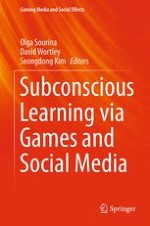2015 | OriginalPaper | Chapter
User-Generated Character Behaviors in Educational Games
Author : Harri Ketamo
Published in: Subconscious Learning via Games and Social Media
Publisher: Springer Singapore
Activate our intelligent search to find suitable subject content or patents.
Select sections of text to find matching patents with Artificial Intelligence. powered by
Select sections of text to find additional relevant content using AI-assisted search. powered by
